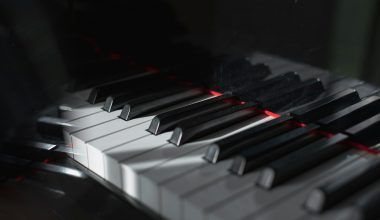Building your home studio is an exciting journey. Whether you’re a budding musician, a seasoned podcaster, or simply someone who loves the idea of recording vocals at home, one essential piece of equipment stands out: the microphone. Picking the right microphone for home studio vocals can make a world of difference in the quality of your recordings. With so many options available, it’s important to understand what makes a microphone ideal for your needs. Let’s dive into everything you need to know about microphones for home studio vocals.
Why the Microphone Matters So Much
The microphone is the heart of your recording setup. It’s the first point of contact for capturing your voice, and the quality of the microphone can significantly impact the final sound. Think of it like this: you wouldn’t paint a masterpiece with a worn-out brush. Similarly, you don’t want to record with a microphone that doesn’t do justice to your voice. The right microphone not only captures the clarity and tone of your vocals but also enhances the nuances that make your recordings unique.
Types of Microphones for Home Studio Vocals
When shopping for a microphone for home studio vocals, you’ll encounter three main types: dynamic, condenser, and ribbon microphones. Each has its strengths and is suited for different purposes. Here’s a closer look at these types:
Dynamic Microphones
Dynamic microphones are durable and versatile. They are great for live performances and work well in less-than-ideal recording spaces. If your home studio isn’t acoustically treated, a dynamic microphone might be a good starting point. They’re less sensitive to background noise and can handle high sound pressure levels.
Condenser Microphones
Condenser microphones are the most popular choice for home studio vocals. They are highly sensitive and capture a wide frequency range, making them perfect for detailed vocal recordings. However, they do require a quieter environment since they can pick up even the slightest background noises. If you’re serious about recording vocals, investing in a condenser microphone is often the best choice.
Ribbon Microphones
Ribbon microphones are a bit more specialized. They’re known for their warm and vintage sound. While they can produce amazing results, they’re also more delicate and less versatile than dynamic or condenser microphones. These are often preferred by audiophiles looking for a specific tonal quality.
Key Features to Look For in a Microphone
Not all microphones are created equal, and certain features can make one microphone more suitable for home studio vocals than another. Here are the top features to consider:
Polar Patterns
The polar pattern of a microphone determines how it picks up sound. For recording vocals, a cardioid pattern is usually ideal because it focuses on the sound directly in front of the microphone while rejecting noise from the sides and back.
Frequency Response
Frequency response refers to the range of frequencies a microphone can capture. A flat frequency response is great for vocals, as it ensures all parts of your voice are recorded accurately.
Sensitivity
A microphone’s sensitivity indicates how well it picks up quiet sounds. High sensitivity is good for detailed recordings but may require a quiet room to avoid capturing unwanted noise.
Connectivity
Most studio microphones connect via XLR cables, but some USB microphones are also available. If you’re just starting out and want something simple, a USB microphone might be a good choice. For higher-quality recordings, an XLR microphone paired with an audio interface is often the way to go.
Setting Up Your Home Studio for Great Vocals
The microphone is just one part of the equation. To get the most out of your microphone, you need a well-prepared recording environment. Here are some tips to optimize your home studio:
Acoustic Treatment
Acoustic treatment is key to reducing echo and background noise. Consider using foam panels, bass traps, and diffusers to create a balanced recording space. Even a simple DIY solution like heavy curtains or blankets can help.
Pop Filter
A pop filter is an affordable but essential accessory for vocal recording. It reduces plosive sounds (like “p” and “b”) that can distort your recordings.
Microphone Stand
A sturdy microphone stand keeps your microphone stable and at the right height. This ensures consistent sound quality and makes your recording sessions more comfortable.
Audio Interface
If you’re using an XLR microphone, you’ll need an audio interface to connect it to your computer. The audio interface converts the analog signal from your microphone into a digital signal your computer can process. Choose an interface with good preamps for the best results.
Popular Microphones for Home Studio Vocals
Shure SM7B
The Shure SM7B is a dynamic microphone that has become a favorite among podcasters and vocalists. It’s known for its warm, natural sound and ability to reject background noise.
Audio-Technica AT2020
The Audio-Technica AT2020 is a budget-friendly condenser microphone that delivers excellent sound quality for the price. It’s a great choice for beginners building their first home studio.
Neumann TLM 103
For those who want top-tier quality, the Neumann TLM 103 is a professional-grade condenser microphone. It’s highly sensitive and captures vocals with incredible detail.
Rode NT1-A
The Rode NT1-A is another excellent condenser microphone. It’s often praised for its low self-noise, making it ideal for quiet studio environments.
Maintaining Your Microphone
To ensure your microphone lasts for years, proper care is essential. Store it in a protective case when not in use, and avoid exposing it to moisture or extreme temperatures. Regularly clean the microphone grille to prevent dust buildup.
Final Thoughts
Choosing the best microphone for home studio vocals is a personal decision. It depends on your recording goals, budget, and the type of sound you’re aiming for. By understanding the different types of microphones and their features, you can make an informed choice that elevates your recordings. Remember, even the best microphone will shine brightest in a well-prepared recording space. So take the time to optimize your studio, and you’ll be well on your way to creating amazing vocal tracks.
For further reading, explore these related articles:
- Kiki Do U Love Me Lyrics: A Song That Took Over the World
- The Perfect Songs for Loved Ones – A Heartwarming Guide
For additional resources on music marketing and distribution, visit DMT Records Pvt. Ltd..






